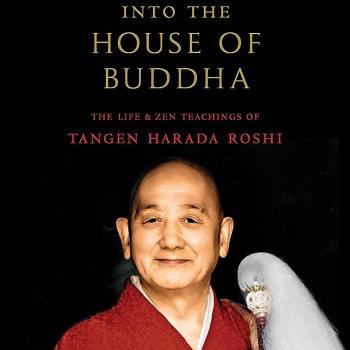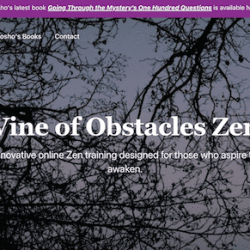Feeling fortunate today for this life.
I’m also in the midst of packing for a trip to northern Minnesota’s Boundary Waters Canoe Area (chains of lakes and rivers, far from the din and bustle of cell phones and computers and my upcoming work year…) where a day can go by without seeing another person and then maybe only far off on the other side of the lake. My son and I will canoe, portage, camp and play through Thursday.
Three rather disparate things are on my mind today – well, in addition to getting everything together and remembering “details” like packing the toilet paper….
First is a Norman Fisher piece in the New York Times. Amazing that right there on the opinion page is a sesshin summary and talk of Dogen’s BeingTime.
Norman wraps up with this:
We want enjoyment, we want to avoid pain and discomfort. But it is impossible that things will always work out, impossible to avoid pain and discomfort. So to be happy, with a happiness that doesn’t blow away with every wind, we need to be able to make use of what happens to us — all of it — whether we find ourselves at the top of a mountain or at the bottom of the sea.
Second, here’s my two cents on Zen and work (a mini installment in the mini-series).
In the early ’90’s, after Katagiri Roshi died, Sekkei Harada Roshi was invited to lead sesshin at Hokyoji. He was asked something about how to apply Zen in daily life and he said something like, “Don’t do that. When you are practicing zazen, completely practice zazen. When you go to work, just completely work without dragging an idea of Zen into something else, with no stink of Zen.”
That’s one way to apply Zen to work.
Third, at Taigen Leighton’s suggestion, I’ve been reading How Zen Became Zen: The Dispute Over Enlightenment and the Formation of Chan Buddhism in the Song-Dynasty China by Morten Schlutter. It is really good. I’ve added it to the list of Zen Study Resources aimed at shattering ideas about Zen over there on the right sidebar.
Schlutter presents a very detailed look at dharma transmission and how dang political it was in the Sung Dynasty. If you weren’t the head of a public monastery, you couldn’t even transmit and a monk usually didn’t get one of those spots because he was bucking the status-quo. So the lineage we chant is not just the succession of enlightened sages but those who were savy enough to navigate the political waters. Explains a bit about how Dogen often rails against fame and gain.
One exception and great story is that of Fuyo Dokai who refused the emperor’s gift of a purple robe and was banished and defrocked as a result.
But the most interesting sections of the book for me are about the reboot of the Soto lineage in the 11th century after it had almost died out and the very unconventional transmission from Dayan Jingxuan (Taiyo Kyogen in Japanese who died 1027) to Touzi Yiqing (Toshi Gisei in Japanese who was born in 1032). A Rinzai lineage monk, Fushan Fayuan, kept the Soto lineage for Dayan, passing it to Touzi. Schlutter presents a lot of wonderful detail about how this might have happened and about the shifting of the story as time went on.
Strangely, it was shortly after this (when a Rinzai guy passed on the Soto line) that the lineages got really into differentiating and the silent illumination/koan debate began – although a similar tension exists in many Buddhist schools between samadhi and wisdom.
The similarities in the debate in the 11th century and what’s going now are almost eerry. Schlutter summarizes Dahui (one of Dogen’s main foils and the creator of the modern koan method) like this:
…The followers of silent illumination refused to make a clear distinction between inherent enlightenment and the actualization of enlightenment. In silent illumination, says Dahui, the actualization of enlightenment is understood as a “wordless silence,” that is, as still meditation…. The silent illumination followers maintained that the act of sitting in meditation was in itself the actualization of enlightenment…. (p. 120)
Knowing the historical context is quite important, imho, for understanding Dogen’s Zen and shikantaza (earnest, vivid sitting) itself is (in part) a response to criticisms that Dahui and others leveled at the quietistic (wallowing, do nothing) tendencies of silent illumination Zen.
Be that as it may, I’ve gotta get the toilet paper packed before I forget. Pine needles are not a good substitute.











